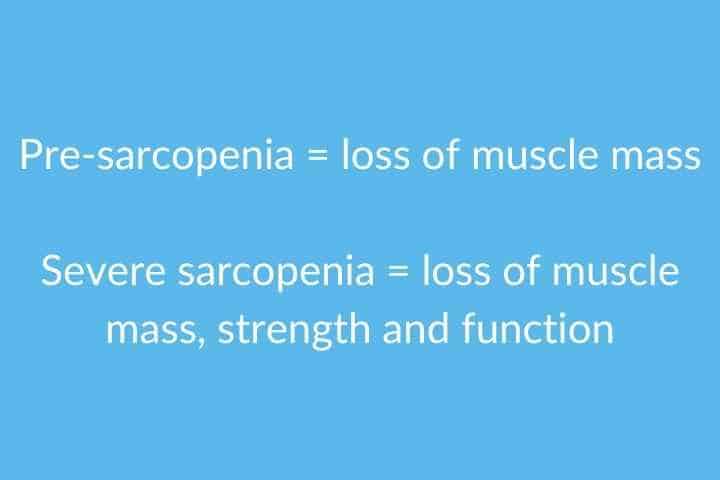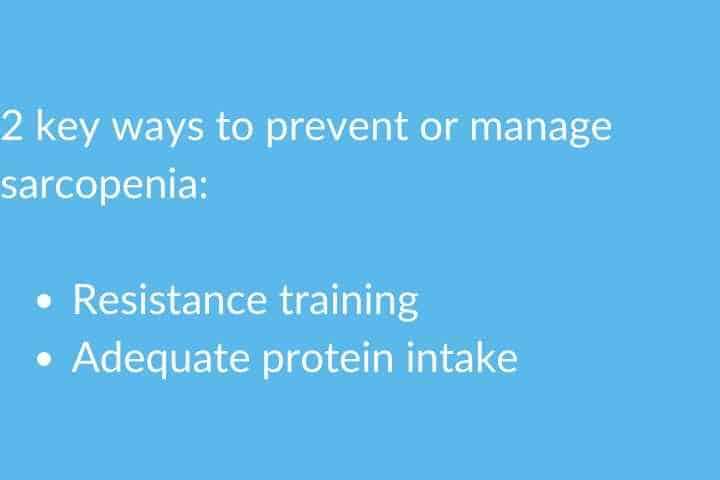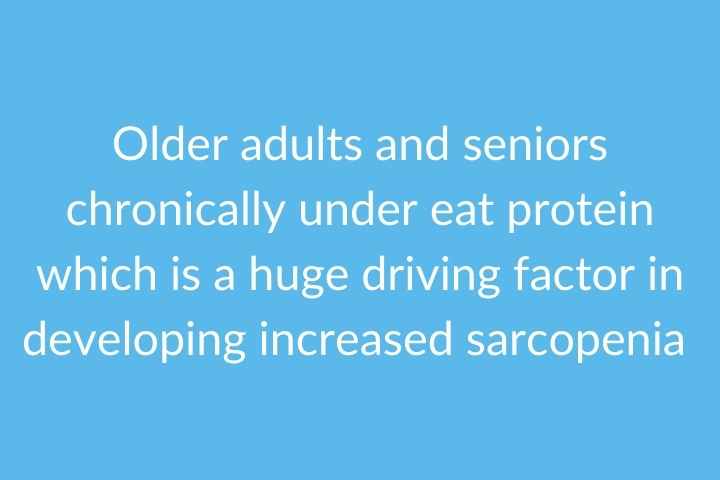In this article I will explain exactly what sarcopenia is and exactly how you can help to prevent it
Last updated August 2022
Sarcopenia is a syndrome that affects a large proportion of the ageing population worldwide. Sarcopenia and the resulting affects it has on older adults is a key driver behind a lot of the specific exercise and nutritional interventions that the Wise Fitness Academy prescribes.
Age related muscle loss (Sarcopenia) refers to a syndrome whereby the ageing population sees a deterioration in muscle mass, strength and function. Although some definitions differ slightly, and we often see a further breakdown of sarcopenia into 'pre' sarcopenia and 'severe' sarcopenia, with loss of just muscle mass associated with 'pre' sarcopenia, and then loss of muscle mass, strength and function associated with 'severe' sarcopenia. These distinctions are important as there isn't necessarily a direct correlation between muscle mass and strength, meaning someone with more muscle mass doesn't necessarily have more strength and function.
Sarcopenia isn't a disease, it's a syndrome. It is widely considered that the entire ageing population will experience sarcopenia to some extent with the oldest members of the population at most risk (without specific intervention). Further, the older we get the more likely we are to experience increased rates of sarcopenia.
Exact prevalence of sarcopenia isn't well established largely due to the non uniform diagnostic criteria. What we do know is that up to 50% of muscle mass can be lost via age related sarcopenia by the 8th decade of life. That's a LOT and will have a severe impact on your ability to complete day to day tasks.
It's also estimated that sarcopenia starts to accelerate from the 4th decade of life and that the loss occurs in a linear fashion with age.
When we cast our eye over society it becomes immediately clear that the older generations often struggle with general mobility.
It's important at this point to recognise the clear difference between someone in their 50's and 60's and someone in their 80's and 90's. There is an obvious accelerated decline in general mobility across these 2 decades. However it's also important to recognise that these longer latency states are directly impacted by our actions in the present.
Those who take measures to prevent muscle loss earlier in life stand a far better chance of having more muscle mass and strength as they age resulting a far better quality of life.
However there isn't an established cut off point for when exercise stops being beneficial. Anyone of any age can introduce interventions such as exercise and better nutrition to help combat sarcopenia and improve overall functionality.
So what are the primary risk factors of developing Sarcopenia beyond just ageing?
- Lack of exercise
Lack of exercise is considered to be the biggest risk factor in the development of sarcopenia. We start to lose muscle fibre numbers from the age of around 50 and loss of muscle mass and strength is more pronounced in those who lead a sedentary lifestyle.
Even those older adults who are physically active see a decline in their speed and strength as they age although it is a much slower decline. This emphasises the importance of physical activity in older adults and in particular resistance training which directly impacts muscle mass and strength. You can read more about exactly what resistance training is and why it's so incredibly important by clicking here
- Hormone changes
Certain hormonal changes that occur with ageing can affect muscle mass and strength negatively. "Age-related decreases in hormone concentrations, including growth hormone, testosterone, thyroid hormone and insulin-like growth factor, lead to loss of muscle mass and strength." Exercise and certain nutrition protocols can help prevent more significant alterations to these hormone changes.
Hormones levels change with age and these changes are associated with negative outcomes. These changes can be mediated through regular exercise and good nutrition.
- Protein metabolism changes
Protein is the key nutrient to building and preserving muscle mass. It does also have many other critical functions within the body.
When we ingest enough protein from a good protein source it stimulates what's called muscle protein synthesis which is essentially when our muscle tissue gets repaired and grows stronger. Older adults have a blunted response to protein synthesis meaning more is required to actually kick start muscle protein synthesis and achieve muscle building.
Older adults need more good quality protein to ensure muscle protein synthesis happens. This is a key determining factor for older adults to retain or even grow muscle mass.
In general, older adults and seniors chronically under eat protein which only makes the issue of muscle loss and increased weakness worse.
You can find out how to easily get more protein into your diet by read my protein article here
In a nutshell
As the global population of older adults continues to grow so does the concern of sarcopenia and its resulting effects on quality of life. However we do have some clear evidence for helping to prevent sarcopenia which includes specific exercise types, enough intake of protein and avoiding certain and common nutritional deficiencies along with some beneficial dietary supplements.
The Wise Fitness Academy heavily promotes the necessary interventions to help prevent sarcopenia:
- Regular resistance training
- Adequate protein intake





[…] faster and this muscle loss can be further exacerbated by certain age related syndromes such as sarcopenia or osteopenia. Muscle mass actually begins to decline in our 40's but it declines at a much slower […]
[…] quality protein which is of high importance to seniors to help prevent age related muscle loss (sarcopenia). The totality of evidence shows a neutral or even modest reductions in cardiovascular disease risk […]